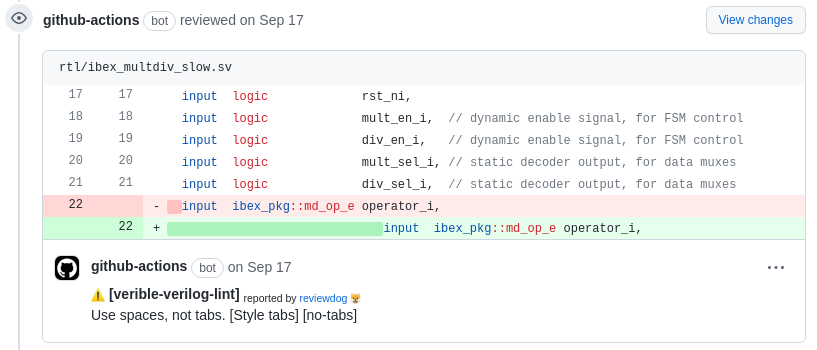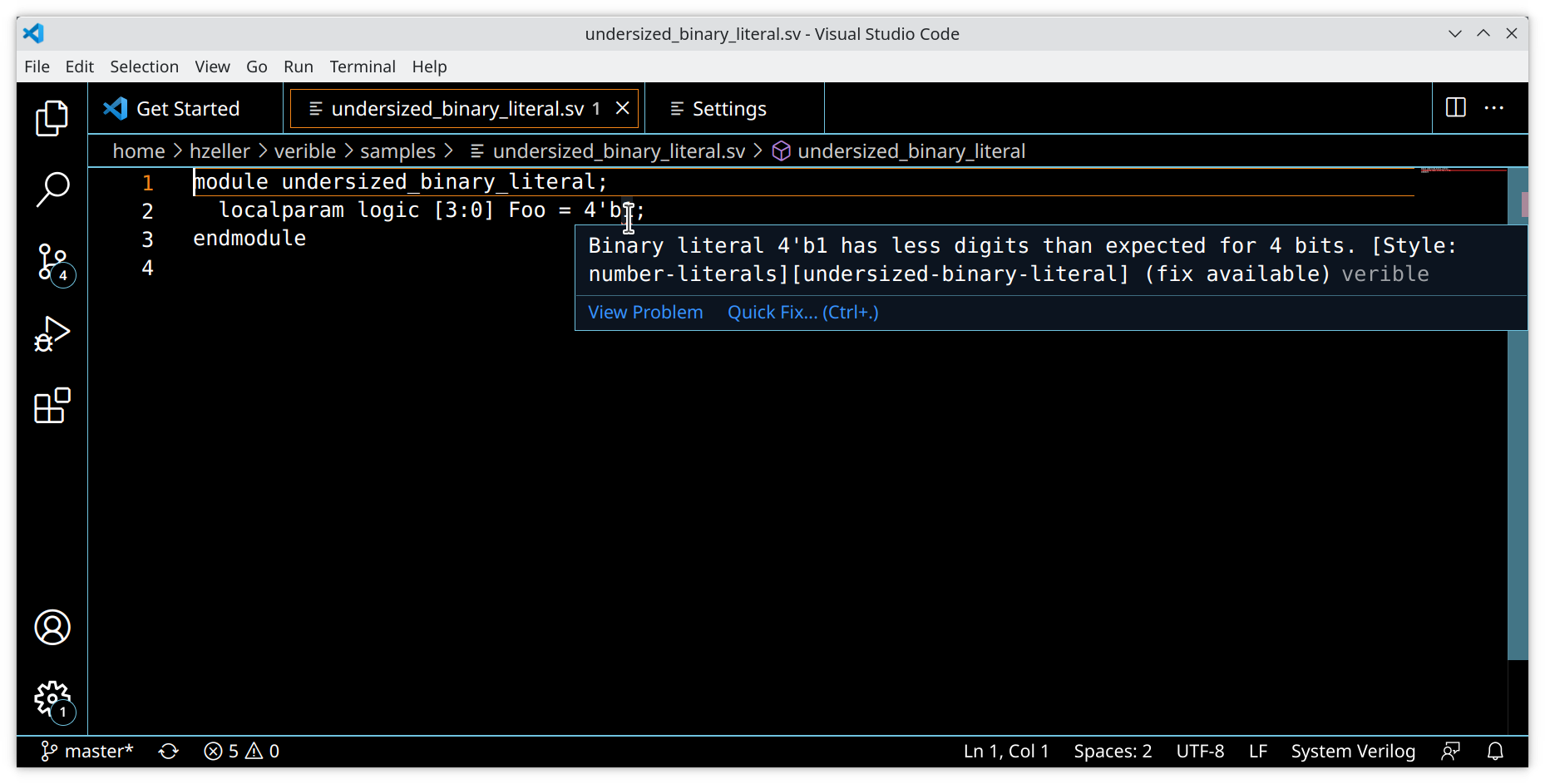The Verible project's main mission is to parse SystemVerilog (IEEE 1800-2017) (as standardized in the SV-LRM) for a wide variety of applications, including developer tools.
It was born out of a need to parse un-preprocessed source files, which is suitable for single-file applications like style-linting and formatting. In doing so, it can be adapted to parse preprocessed source files, which is what real compilers and toolchains require.
The spirit of the project is that no-one should ever have to develop a SystemVerilog parser for their own application, because developing a standard-compliant parser is an enormous task due to the syntactic complexity of the language. Verible's parser is also regularly tested against an ever-growing suite of (tool-independent) language compliance tests at https://symbiflow.github.io/sv-tests/.
A lesser (but notable) objective is that the language-agnostic components of Verible be usable for rapidly developing language support tools for other languages.
For simple installation, we provide regular binary releases for Linux and Windows, including statically linked binaries for x86 and Arm to run on almost any Linux distribution.
There are also some distributions that include Verible
If you prefer to build and install the binaries locally yourself, see details below in the Developers section.
Learn more about the parser implementation here.
We provide a standalone verible-verilog-syntax tool
to help with visualizing the syntax structure as understood by the lexer and
parser. This is very useful for troubleshooting and understand the internal
representations seen by the other tools.
The tool has an ability of exporting a concrete syntax tree in JSON format, making use of it in external tools easy. There is also a Python wrapper module and a few example scripts.
verible-verilog-lint identifies constructs or patterns
in code that are deemed undesirable according to a style guide. The main goal is
to relieve humans the burden of reviewing code for style compliance. Many
lint rules use syntax tree pattern matching to find style
violations.
Features:
- Style guide citations in diagnostics
- Rule deck configurability
- Waiver mechanisms: in-file, external waiver file
- Github SystemVerilog linter action available.
Documentation:
The verible-verilog-format formatter manages
whitespace in accordance with a particular style. The main goal is to relieve
humans of having to manually manage whitespace, wrapping, and indentation, and
to provide a tool that can be integrated into any editor to enable
editor-independent consistency.
Features (various degress of work-in-progress):
- Corrects indentation
- Corrects inter-token spacing, with syntax context awareness
- Line-wrapping to a column limit
- Support for incremental formatting, only touched changed lines.
- Interactive formatting: accept or decline formatting changes
- Tabular alignment
- Github SystemVerilog formatter action available.
The verible-verilog-ls is a language server that
provides the functionalities that come with the Verible command line tools
also directly in your editor.
It implements the standardized language server protocol that is supported by a myriad of editors and IDEs.
The language server provides formatting and linting. If possible, it also provides quick-fixes
verible-verilog-diff compares two input files for
equivalence.
verible-verilog-project is a multi-tool that
operates on whole Verilog projects, consisting of a file list and related
configurations. This serves as a diagnostic tool for analyzing (and potentially
transforming) project-level sources.
verible-verilog-obfuscate transforms Verilog
code by replacing identifiers with obfuscated names of equal length, and
preserving all other text, including spaces. Output is written to stdout. The
resulting file size is the same as the original. This is useful for preparing
potentially sensitive test cases with tool vendors.
verible-verilog-preprocessor is a collection
of preprocessor-like tools, (but does not include a fully-featured Verilog
preprocessor yet.)
verible-verilog-kythe-extractor extracts indexing
facts fromm SV source code using the Kythe schema, which can
then enhance IDEs with linked cross-references for ease of source code
navigation.
For source code browsing, we recommend using the fully-indexed and searchable mirror at https://cs.opensource.google/verible/verible.
If you'd like to contribute, check out the contributing guide and the development resources.
Verible's code base is written in C++.
To build, you need the bazel (>= 5.0 and <= 7) build system and a C++17
compatible compiler (e.g. >= g++-10), as well as python3. Note, to build
Verible with bazel-7, so you need to add --noenable_bzlmod to every bazel
command. A lot of users of Verible have to work on pretty old installations,
so we try to keep the requirements as minimal as possible.
Use your package manager to install the dependencies; on a system with
the nix package manager simply run nix-shell to get a build environment.
# Build all tools and libraries
# bazel 5/6/7
bazel build -c opt //...You can access the generated artifacts under bazel-bin/. For instance the
syntax checker will be at
bazel-bin/verilog/tools/syntax/verible-verilog-syntax (corresponding to the
target name //verilog/tools/syntax:verible-verilog-syntax).
Moreover, if you need statically linked executables that don't depend on your
shared libraries, you can use custom config
create_static_linked_executables (with this setting bfd linker will be used,
instead of default gold linker).
# Generate statically linked executables.
# Uses bfd linker and needs static system libs available.
bazel build -c opt --config=create_static_linked_executables //...Flex and Bison, that are needed for the parser generation, are compiled as part
of the build process. But if for any reason you want or need local tools (e.g.
if you encounter a compile problem with them - please file a bug then)
can choose so by adding --//bazel:use_local_flex_bison to your bazel
command line:
# Also append the option '--//bazel:use_local_flex_bison' to test/install commands
bazel build -c opt --//bazel:use_local_flex_bison //...Building on Windows requires LLVM, WinFlexBison 3 and Git-bash to be installed. Using package manager chocolatey, this can be done with
choco install git llvm winflexbison3Bazel may also require environment variable to use git-bash and LLVM, on powershell
$env:BAZEL_SH="C:\Program Files\Git\git-bash.exe"
$env:BAZEL_LLVM="C:\Program Files\LLVM"For simple installation, we provide regular binary releases.
If you prefer to build and install the binaries locally yourself:
# In your home directory
bazel run -c opt :install -- ~/bin
# For a system directory that requires root-access, call with -s option.
# (Do _not_ run bazel with sudo.)
bazel run -c opt :install -- -s /usr/local/bin(this requies a compliant install utility, otherwise simply copy
the binaries from bazel-bin/ to your desired location)
We strongly encourage running the test suite using bazel:
# Run all tests
bazel test -c opt //...Whenever adding new features in file, say, foo.cc always make sure to also
update (or add) the corresponding foo_test.cc. Once you've written the
test, you can use .github/bin/generate-coverage-html.sh to double-check
that you have covered all code-paths in your test; narrow the coverage
run to your test to make sure coverage is not accidentally coming from
unrelated tests that happen to use the library:
MODE=coverage .github/bin/build-and-test.sh //foo/bar:foo_test
.github/bin/generate-coverage-html.shJoin the Verible community!
- Developers: verible-dev@googlegroups.com (join)
- Users: verible-users@googlegroups.com (join)
The Verible team is interested in exploring how it can help other tool developers in providing a SystemVerilog front end, for example, emitting an abstract syntax tree (AST) or possibly even provide more higher-level UHDM format. If you are interested in collaborating, contact us.



